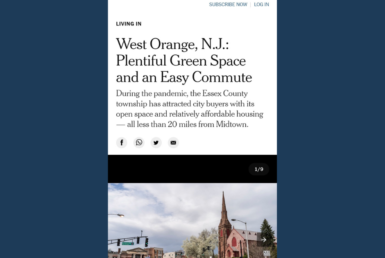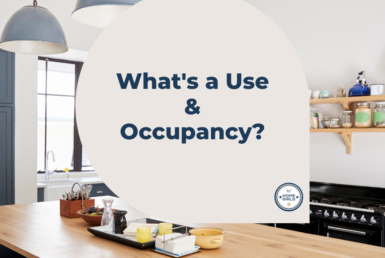4 Environmental Issues To Be Aware Of When Buying An Older Home


In our market most of the homes are older, mostly from the early to middle 20th century. Older homes can have lots of character and make for incredibly charming neighborhoods, but they can also come with some environmental hazards thanks to outdated building practices. Here are some things to consider before you buy:
https://drcarlosarzabe.com/dr-carlos-arzabe/
https://www.petwantsclt.com/petwants-charlotte-ingredients/ – Underground oil tanks: For years many homes were heated with oil that was stored in an underground oil tank. Over time, most of these homes were converted to more efficient heating methods or the tanks were moved indoors. Originally when the underground tanks were decommissioned, they were emptied and then filled with sand. Now, tanks are generally removed altogether to avoid any potential for leakage into the soil.
The danger: An underground oil tank, whether active or not, may have contaminated soil around it, perhaps from a rusting tank or a spill from when the tank was filled. Cleaning up the soil can be incredibly expensive and, if done during the closing process, can add weeks or months of delay to the timeline.
The remedy: When buying a home in an older neighborhood, we always suggest doing an oil tank sweep. If the sellers can prove, with paperwork and certification from the town, that a tank was removed, you may be able to skip this step. However, there is the possibility that there may have been multiple tanks on the property, so you may still want to do a sweep. The peace of mind may well be worth it for the cost of the inspection. Even if all tanks have been shown to be removed, you may also want to test the soil to make sure there is no evidence of leakage. If an oil tank is found in the purchasing process, the seller is responsible for its removal and any needed clean up (unless otherwise noted in the listing). Be prepared that this can take several weeks or months. Occasionally, homes have active and working underground oil tanks. Again, have the tank system and the soil tested and if everything is okay, you can keep it underground. Just know that only a few insurance companies provide coverage for homes with an underground tank and that you will be responsible for any future damage that may occur.
– Radon: Radon is a colorless, odorless naturally-occurring radioactive gas that can cause lung cancer at high levels. Because it is frequently found in homes in our area, all inspections include a radon test.
http://economiacircularverde.com/que-es-la-economia-circular/ The danger: Radon is the second leading cause of lung cancer, behind smoking. You want to make sure the radon levels are below the EPA recommendation of 4 pCi/L (picocuries per liter).
The remedy: your home inspector will leave a canister to measure the radon level in the lowest living level of the home, usually the basement. He will collect the canister a few days after the inspection to measure the result. If the levels are higher than the EPA recommendation, the sellers will have to install a ventilation system that will bring the levels down when re-tested. These systems are not terribly expensive and are very effective, so do not panic if the house you love has an initially high reading.
– Lead paint: If the home was built before 1978, there may be lead paint in it. Note: most homeowners do not test for lead paint, so the lead paint disclosure that home sellers sign will likely indicate that there is no known lead paint. (No disclosure is required if the home was built after 1978, when lead paint was banned.)
The danger: Ingestion of lead paint, particularly from peeling paint chips can be very harmful to children. Lead paint in dust is also a health hazard for everyone in the home.
The remedy: The older the home, the more likely it is to have lead paint in it. Unfortunately, because of the cost involved to remove it, most homeowners will not test for lead paint. And if it is a sellers’ market, they may not feel the need to accommodate a buyer who wants the home tested. If a lead paint-free home is a priority for you, the best suggestion is to look at homes built after 1978 or homes where the sellers indicate that they have removed lead paint. If you choose to purchase a home that may have lead paint based on its age, according to the EPA, lead paint that is “in good condition is usually not harmful.” The EPA website has some great tips on how to keep your home safe. Also, keep in mind that if you do any major renovations, you should you use a Lead-Safe Certified contractor who will insure that the dust that is disturbed is contained safely. Again, consult the EPA website for tips for safe renovations by your contractor or even a do-it-yourself project.
– Asbestos: Asbestos was commonly used in building materials in the 1940s through the 1970s. In a home, you’ll find asbestos in places like insulation on boiler pipes, ceiling tiles, some cement siding, and 9”x9” floor tiles, among other locations.
The danger: When exposed, the tiny fibers in asbestos can lead to lung disease or mesothelioma.
The remedy: Your home inspector will be able to give you a visible check on where asbestos might be found in the house. If the material is obvious and exposed, you can ask the seller to professionally remove it at their own expense. In some cases, your inspector may see signs of asbestos-containing materials, but if they are not damaged or disturbed, they may not pose a health risk and he may suggest it is best to leave it alone (and the homeowner may not be willing to remedy it). This is probably not a reason to pass on a home, however, keep in mind that you want to be aware to not disturb these areas and that the necessary precautions are taken for any renovation project.
For the first-time home buyer these environmental issues can seem truly daunting and may make you want to walk away from a home. But your realtor and a great inspector can help you navigate what are true concerns vs. manageable issue.






Join The Discussion